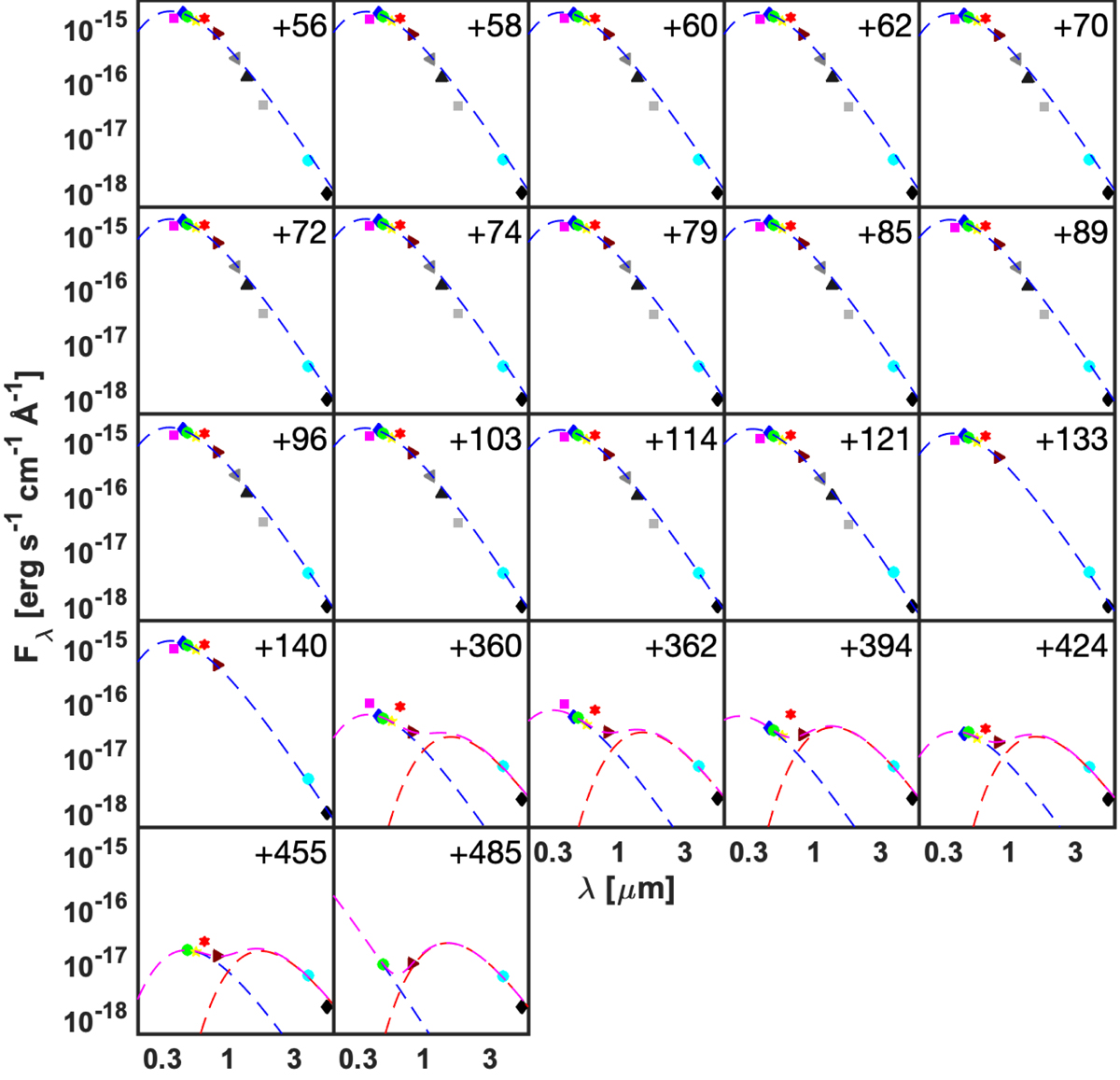Fig. 5.

Spectral energy distributions (SEDs) of SN 2014ab. The first 16 quadrants from the top contain SEDs constructed from flux points covering optical, NIR, and MIR wavelengths and extend from +56 d to +140 d relative to the time of first WISE detection. Each of these SEDs are fit with a single black body (BB) function, where the optical flux is dominating. We excluded u and r band from the fit due to line blanketing and the strong Hα emission line, respectively. The SEDs plotted in the other quadrants are constructed from optical and MIR flux points and extend from +360 d to +485 d relative to first WISE detection. The late-phase SEDs clearly exhibit an excess of flux relative to a single BB fit to the optical flux points. We therefore fit the late SEDs with a two-component BB function. In the last quadrant the optical BB fit is not reliable as only g and i are available.
Current usage metrics show cumulative count of Article Views (full-text article views including HTML views, PDF and ePub downloads, according to the available data) and Abstracts Views on Vision4Press platform.
Data correspond to usage on the plateform after 2015. The current usage metrics is available 48-96 hours after online publication and is updated daily on week days.
Initial download of the metrics may take a while.


